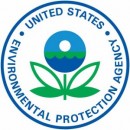
PHMSA
As just noted above, in a major action the agency has published its newest international harmonization proposal. The NPRM is HM-215Q and will align current US 49 CFR HMR regulations more closely with the current UN structure found in the ICA/IATA, IMDG, and UNMR texts. Highlights include:
• Incorporation by Reference: PHMSA proposes to incorporate by reference updated versions of the following international hazardous materials regulations and standards: the 2023–2024 edition of the International Civil Aviation Organization Technical Instructions for the Safe Transport of Dangerous Goods by Air (ICAO Technical Instructions); Amendment 41–22 to the International Maritime Dangerous Goods Code (IMDG Code); and the 22nd revised edition of the United Nations Recommendations on the Transport of Dangerous Goods— Model Regulations (UN Model Regulations);
• Hazardous Materials Table: PHMSA proposes amendments to the Hazardous Materials Table (HMT; 49 CFR 172.101) to add, revise, or remove certain PSNs, hazard classes, PGs, SPs, packaging authorizations, bulk packaging requirements, and passenger and cargo aircraft maximum quantity limits.
• Additions to and modifications of the Specials Provisions section
• Polymerizing Substances: In 2017— as part of the HM–215N final rule 1— PHMSA added four new Division 4.1 (flammable solid) entries for polymerizing substances to the HMT and added defining criteria, authorized packagings, and safety requirements including, but not limited to, stabilization methods and operational controls into the HMR.
• Cobalt dihydroxide powder containing not less than 10 percent respirable particles: PHMSA proposes to add a new entry to HMT, ‘‘UN3550 Cobalt dihydroxide powder, containing not less than 10% respirable particles’’ and corresponding packaging provisions. Historically, this hazardous material has been classified and transported as a Class 9 material under ‘‘UN3077, Environmentally hazardous substance, solid, n.o.s.’’ however testing required under EU REACH determined that this material poses an inhalation toxicity hazard. Following this determination, the 22nd revised edition of the UN Model Regulations developed a new entry on the Dangerous Goods List (DGL) and packaging authorizations specifically for this hazardous material to facilitate continued global transport of this material. In this NPRM, PHMSA proposes to do likewise by adding a new entry for cobalt dihydroxide containing not less than 10 percent respirable particles and assigning it UN3550 on the HMT, in addition to adding packaging provisions, including the authorization to transport this material in flexible IBCs. PHMSA expects that these provisions will facilitate the continued transport of this material, to keep global supply chains open.
• Lithium Battery Exceptions: PHMSA proposes to remove the exceptions provided for small lithium cells and batteries for transportation by aircraft. This is consistent with the elimination of similar provisions in the ICAO Technical Instructions. See 173.185 of the Section-by-Section Review for additional discussion of these amendments.
• Harmonization of lithium battery marking sizes and requirements with the UN standards
• Alignment of requirements for ID8000 consumer commodities with UN standards and revision of marking requirements as such
The above are only highlights and do not constitute all of the proposed revisions. Comments are due by July 31st, 2023.
For full details, see the NPRM itself HERE.
PHMSA’s Office of Hazardous Materials Safety will hold a public meeting to solicit input on potential adjustments to the statutorily mandated hazardous materials registration and fee assessment program. The potential adjustment of fees may be necessary to fund PHMSA’s national emergency preparedness grant programs at the newly authorized level in accordance with the Infrastructure Investment and Jobs Act of 2021. The meeting will be held virtually on June 28, 2023, from 1:00 p.m. until 4:00 p.m. Eastern Standard Time.
Find out how to attend and participate HERE.
Materials of Trade are a subject that can cause significant confusion for those who use hazardous materials as part of their normal work activities, and therefore must transport them in their own vehicles. Often, there can be questions over what to do. PHMSA has released a new guide to the topic that should prove very helpful to this set of DG stakeholders. See the new guide by clicking the link below:
The agency also pushed out its latest tranche of special permit actions. Review them at the links below:
OSHA
The agency announced a US pre-meeting for June 21st that will address issues of interest to stakeholders prior to the upcoming UN meetings cycle later in the summer dealing with the GHS (Globally Harmonized System). The GHS—the internationally harmonized system governing hazard communication regarding dangerous chemicals in the workplace—is becoming increasing relevant to the DG transport community as the two regulatory structures continue to align more and more closely.
Find the pre-meeting details HERE.
EPA
The agency published a proposed rule that would if enacted revise the way in which new chemicals are assessed and risk evaluated for inclusion under the Toxic Substances Control Act. This action would primarily impact chemical manufacturers.
See it HERE.
Labelmaster is a full-service provider of products, shipping and training software, and professional consulting services to assist the DG and HS&E professional to comply with national and international regulations. See our full line of solutions at www.labelmaster.com.


Nikki, great blog this week. Nice to finally see harmonization of PHMSA removing the exceptions for small lithium batteries (standalones) when shipped by air. When the rules are inconsistent with the popular common carrier variations it really creates confusion on the shipping floor.